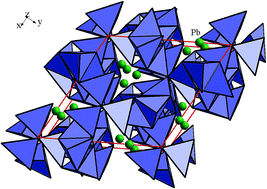Experimental and theoretical study of the electronic structure and optical spectral features of PbIn6Te10
Abstract
We present measurements of the optical properties of crystalline PbIn6Te10. The samples are grown in the form of parallelepipeds of size ∼5 × 3 × 0.3 mm3. The absorption coefficient α(hν) shows an exponential behavior with energy in the energy range 0.82–0.99 eV followed by an abrupt increase in the absorption from 1.07–1.13 eV. According to the analysis of the data, the indirect gap is 0.88 eV while the direct gap is 1.05 eV. We have used our own measured X-ray diffraction data of the atomic positions in the unit cell as the input for the first principles calculations. Using the generalized gradient approximation (PBE − GGA) within the full potential linear augmented plane wave (FPLAPW + lo) method, the atomic positions are relaxed so as to minimize the forces acting on the atoms. We have used this relaxed geometry to calculate the electronic structure and related ground state properties using PBE − GGA and a recently modified Becke–Johnson potential (mBJ) and mBJ with spin–orbit coupling (mBJ + soc). The analysis of band energy dispersion shows that the valence band maximum (VBM) is located at Γ symmetry points, while the conduction band minimum (CBM) is situated at the M symmetry point of the first Brillouin zone, resulting in an indirect energy band gap of about 0.5 eV (PBE − GGA), 0.8 eV (mBJ) and 0.5 eV (mBJ + soc). It is clear that mBJ succeeds by a large amount in bringing the calculated energy gap in good agreement with the measured energy gap of 0.9 eV. However the inclusion of spin–orbit coupling modifies strongly the CBM and reduces the band by 0.3 eV. The anisotropy of space charge density distribution is analyzed with respect to the charge density distribution.



 Please wait while we load your content...
Please wait while we load your content...